#Courage Under Fire
Explore tagged Tumblr posts
Text
Somewhere outside Needles, California, Christmas 1995, Ben Affleck's car phone started chirping. Damon was taking it easy in the passenger seat — still recovering from dropping 40 pounds for his junkie scenes in Courage Under Fire. Affleck, who dreads flying and frequently drives cross-country, was all poise when the voice on the other end said, "You have a meeting with Mel Gibson . . . in New York . . . in two days." They spent much of the next 48 hours pounding coffee and quoting lines from Mad Max to each other as the Nevada desert faded into the Manhattan skyline. "We got to Miramax's offices just before our lunch," says Damon.
— From Matt Damon and Ben Affleck's interview with Premiere (January 1998).
#ben affleck#matt damon#matt & ben#on living together#good will hunting#courage under fire#mad max#1995#1998#quote#originals#premiere
13 notes
·
View notes
Text
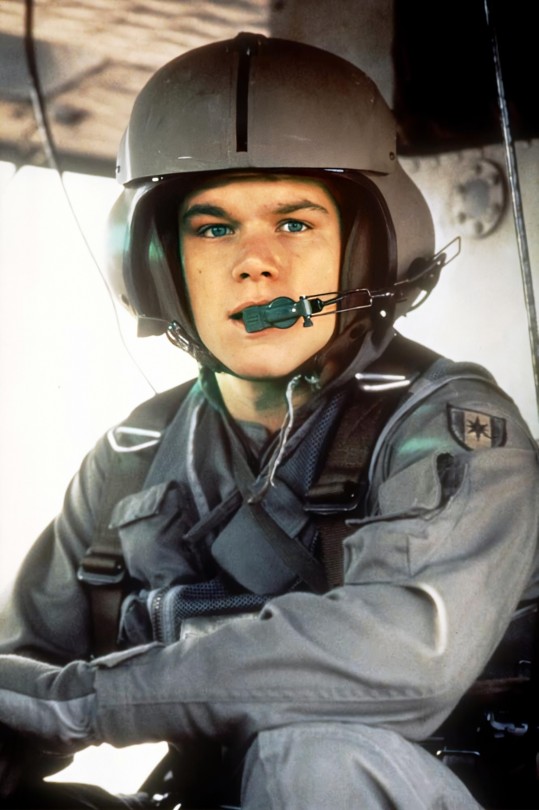
Courage Under Fire (1996)
#1996#film#movie#aviation#military#Courage Under Fire#Matt Damon#Specialist Andrew Ilario#Andrew Ilario#Meg Ryan#Captain Karen Emma Walden#Karen Emma Walden#Denzel Washington#Lieutenant Colonel Nathaniel Serling#Nathaniel Serling#Lou Diamond Phillips#Staff Sergeant John Monfriez#John Monfriez#Tim Guinee#Warrant Officer One A. Rady#One A. Rady#Medal Of Honor#Operation Desert Storm#Desert Storm#Gulf War#Kuwait#Iraq#Bell#UH-1#Iroquois
12 notes
·
View notes
Text
I’ve been meaning to upload these but I simply forgot 😬.
Courage under fire - [1996] this is such a good movie! Lou as monfriez







#courage under fire#young lou diamond phillips#lou diamond phillips#1996#army#soldiers#actor#hollywood actor#90s#war movies#military#drama#war drama#classic movies
4 notes
·
View notes
Photo
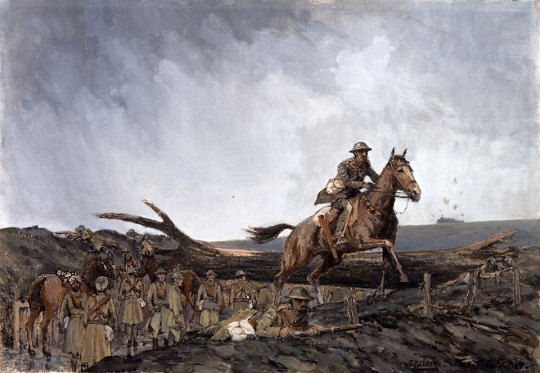
Ανδρείη τας άτας μικράς έρδει.*
- Democritus
Courage makes misfortunes seem small.*
After the German advance on 30 November 1917 during the Battle of Cambrai, the British counter-attacked on 1 December. 4th Battalion Grenadier Guards attempted to recapture Gonnelieu, just south of the Péronne-Cambrai road, south-west of Bonavis, which had fallen to the enemy the preceding day. During this action, Acting Captain G H T Paton commanded the support company. The attack failed but it prevented the Germans from advancing out of Gonnelieu. Meanwhile to the south, the British mounted several cavalry attacks south of Gauche Wood towards Villers-Guislain which had also been captured by the Germans the day before. One of these involved 2nd Lancers (Gardner’s Horse), 5th (Mhow) Cavalry Brigade.
They came under very heavy fire and were soon pinned down. Lance Dafadar Gobind Singh volunteered three times for carrying the messages over open ground under constant fire.First, he carried a report on the position to Brigade HQ and brought back the reply. He then carried another report back to the HQ but was refused permission to return to the front. His regiment eventually completed a successful withdrawal after nightfall.
Gobind Singh received the Victoria Cross, the highest British and Commonwealth award for gallantry in the face of the enemy.
#singh#gobind singh#cambrai#battle of cambrai#first world war#war#gallantry#courage#bravery#courage under fire#british indian army#british army#soldier#2nd lancers#victoria cross#democritus#greek#classical
32 notes
·
View notes
Text

6 notes
·
View notes
Text




First time watching this movie. I'm starting to like it...
3 notes
·
View notes
Text

#courage under fire#movies#denzel washington#meg ryan#lou diamond phillips#illustration#vintage art#alternative movie posters
4 notes
·
View notes
Text
News report: "Pearl Jam guitarist falls off stage ..."
Me: NOOOOOO!!!! MIKE!!! Poor baby!
News report: "But continues playing guitar solo without missing a single note."
Me: THAT'S MY BOY!!!
1 note
·
View note
Text
Review: On His Watch
Synopsis: Two thrilling stories from the True Blue K-9 Unit series. Courage Under Fire by Sharon Dunn-A deadly stalker has rookie K-9 officer Lani Branson in his crosshairs, and he won’t stop until she’s dead. Her boss, K-9 police chief Noah Jameson, won’t let that happen on his watch, especially since there’s a chance this is the same person who killed his brother. Can they unmask the murderer…
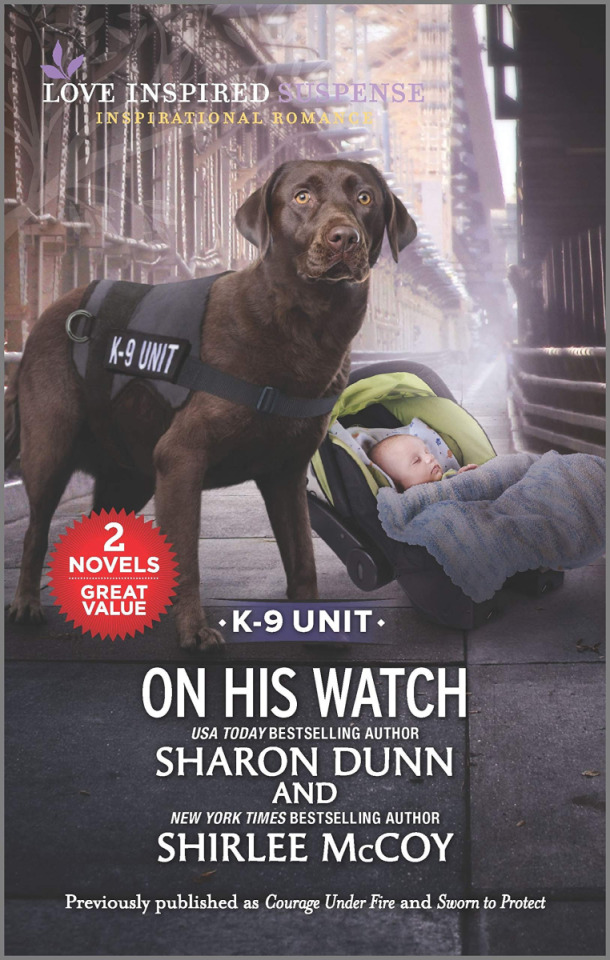
View On WordPress
#2-in-1 book#Amazon#bleed blue#book review#Courage Under fire#crime#crime fiction#danger#deadly#dogs#entertaining#Goodreads#Harlequin#Harlequin Books#hope#Intense#intrigue#k9#love#Love Inspired Suspense#Mayhem#murder#must read#mystery#On His Watch#Police#recommended#romance#serial killer#Sharon Dunn
1 note
·
View note
Text
Courage Under Fire
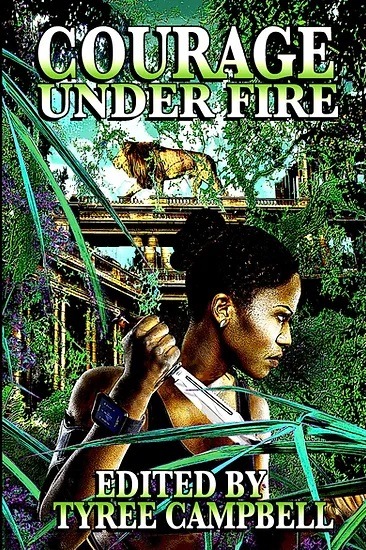
Wonderful news! I just learned that “Courage Under Fire” released by Hiraeth Books, (the kind folks who published a couple of my other stories) has been published and it features my historical fantasy, “Fearfully and Wonderfully Made.” If you’re interested in buying a copy, you can do so here.
I intend to do a Fun Facts post in a few days.
I hope you’re all having a good Monday.
Until next time!
#historical fiction#fantasy fiction#fearfully and wonderfully made#courage under fire#hiraeth books#short stories
1 note
·
View note
Text
Unveiling the Human Condition: A Review of "Grapes of Wrath" by Boyd Cable

Boyd Cable's "Grapes of Wrath" is a poignant exploration of the human spirit amidst the turmoil of war. Set against the backdrop of World War I, Cable's novel follows the journey of a group of soldiers as they navigate the harrowing realities of combat and confront the profound moral dilemmas it presents. Through vivid prose and compelling storytelling, Cable captures the essence of the soldier's experience, from the camaraderie of the trenches to the devastation of battle.
At the heart of "Grapes of Wrath" is Cable's exploration of the psychological and emotional toll of war on the individual. Through the eyes of his protagonist, Cable delves into the complexities of fear, courage, and resilience in the face of unimaginable adversity. The novel offers a raw and unflinching portrayal of the physical and mental challenges that soldiers endure, shedding light on the often overlooked human cost of conflict.
One of the most striking aspects of Cable's work is its focus on the humanity that persists even in the darkest of times. Despite the horrors of war, Cable's characters retain their capacity for compassion, empathy, and love, serving as a powerful reminder of the resilience of the human spirit. Through moments of kindness and camaraderie amidst the chaos of battle, Cable highlights the enduring bonds of friendship and solidarity that sustain soldiers in their darkest hours.
In addition to its exploration of the individual experience of war, "Grapes of Wrath" also offers a broader commentary on the nature of conflict and its impact on society as a whole. Cable's vivid descriptions of the landscape of war and its aftermath paint a vivid picture of the devastation wrought by violence, while his portrayal of the social and political forces at play provides insight into the broader context in which war unfolds.
Overall, "Grapes of Wrath" is a powerful and thought-provoking novel that offers a nuanced portrayal of the human experience in times of war. Through its compelling characters, vivid imagery, and profound insights, Cable's work resonates with readers long after the final page is turned, serving as a testament to the enduring power of literature to illuminate the complexities of the human condition.
Boyd Cable's "Grapes of Wrath" is available in Amazon in paperback 15.99$ and hardcover 21.99$ editions.
Number of pages: 182
Language: English
Rating: 8/10
Link of the book!
Review By: King's Cat
#Grapes of Wrath#Boyd Cable#World War I novel#Trench warfare#Soldier's journey#Battlefront camaraderie#Psychological impact#Emotional resilience#Human spirit#Courage under fire#Moral dilemmas#War's toll#Devastation of conflict#Sacrifice and bravery#Individual experiences#Comradeship#Surviving the trenches#Psychological trauma#Humanity in war#Realities of combat#Heroism and sacrifice#Brotherhood in arms#Frontline camaraderie#Shell shock#Post-war trauma#Battlefront friendships#Emotional struggles#Psychological resilience#War's aftermath#Impact on soldiers
0 notes
Text

Matt Damon and Ben Affleck's interview w/ Premiere (January 1998)
Boston Uncommon
Bean Town natives Matt Damon and Ben Affleck return home to shoot Good Will Hunting, a tale of growing pains, friendship, and dazzling talent. It might just be the story of their own lives.
By John Brodie
-
Ben Affleck pilots a Jeep Cherokee through the backstreets of Cambridge, Massachusetts. July twilight turns the red brick buildings around Harvard Square a fiery shade of orange. The Mighty, Mighty Bosstones play as Affleck, with his younger brother, Casey, and Matt Damon, gives a guided tour of their childhood haunts: Rocco's Place; the One Thousand and One Plays video arcade; the spot near the Weld Boathouse where a teenage Damon stripped and swam across a river famous for its dirty water; and Hi-Fi Pizza, which was always closing just as Damon and Affleck would show up for a late-night slice. "I was there a few days ago, and the guys behind the counter were, like, 'You're Chasing Amy! You're Chasing Amy!' " says Affleck, doing his best impersonation of the counterman's Indian accent. "And so I say, 'Yes, yes. I am. Now how 'bout a slice?' And they say, 'No, sorry, Mr. Chasing Amy, we're closed.' "
Tree-lined streets give way to the gray stone of the Cambridge Rindge and Latin School's modern campus. As Affleck parks the car by their high school theater, Damon can no longer contain himself. "Say, Ben," he taunts, "why don't you tell us about the time you played the caterpillar in Alice in Wonderland?"
"Yup, I was the zany, hookah-smoking caterpillar," Affleck says, gearing up for a cutting contest. "I chose to play the role wrapped in garbage bags held together by Scotch tape. Now, if I were to play that caterpillar today, I might do it another way."
"It was an underrated performance," says 22-year-old Casey. "Those trash bags were a bold choice."
"So, Matt, why don't you favor us with your version of 'Morning Glory' from Pippin?" says 25-year-old Ben, letting loose a left-right (Bob Fosse-Stephen Schwartz) slight to Damon's virility. Damon holds in his comeback until the Jeep is in motion and they pass his childhood home. Affleck's house is two blocks away, and as boys, he and Damon often walked to school together — even though Damon was two years older.
"Ben used to ring my bell and then cower on the other side of the street, because he was afraid of the little kids at this school right next door," Damon says and flashes a toothy smile as Affleck stops him midsentence.
"This was a delinquent school and all the kids were smoking cigarettes," Affleck says, as he quickly pulls around the corner and arrives at his mom's blue townhouse on Cottage Street. He is hoping to point out his birthplace and be on his way when he is waylaid by his mother, who, unimpressed by the presence of a journalist, wants to know when he plans on returning her Jeep.
"Are you going to be home for dinner?" the sixth-grade public-school teacher asks her son. "Mom, you're banned from talking to the press since you told the story about how I used to play with a Wonder Woman doll," Affleck warns, striding into the kitchen for a hug and a sample of freshly prepared guacamole.
Damon and Affleck could be any pair of twentysomething slackers enjoying a late summer idyll, but by the weekend, the hookah-smoking caterpillar will be heading west to costar with Bruce Willis in the megabuck asteroid movie Armageddon, and Mr. Morning Glory will be on a plane to England, where he will play the title role in Saving Private Ryan, opposite Tom Hanks, adding Steven Spielberg's name to the list of directors (Francis Ford Coppola, Gus Van Sant) with whom he has worked over the past year.
This summer has been a last gasp of childhood for the pair. They recently finished production on Miramax's Good Will Hunting, an ensemble drama Damon and Affleck co-wrote before leaving Harvard and Occidental College, respectively, roughly four years ago. The movie, due out at Christmas and directed by To Die For's Van Sant, is already being touted as Oscar bait. Damon stars as a South Boston juvenile delinquent who works as a janitor at MIT and just happens to be an unschooled mathematics genius; the Affleck brothers play two of his Southie pals; and Robin Williams plays it straight as the shrink who helps Damon's working-class hero realize his potential.
That this pet project should come to fruition with such strong Hollywood backing reflects the sudden industry heat on the young actors' careers. But Damon and Affleck have been together every step of the way — and they depend on each other to keep things real. "There's an emotional core to Good Will Hunting that came from Ben and Matt," says Williams, who plays therapist Sean McGuire with a gravitas similar to that of Dead Poets Society. "They have this unspoken twins thing. They care for each other, yet they bust on each other. And that was a great bass line to work with. I'm very proud of this movie. It has a resonance."
On November 13, 1994, the Good Will Hunting script became the object of an intense bidding war in Hollywood. Damon was living in a shabby two-bedroom house with a buddy from high school. Affleck was sleeping on his sofa, having fled a busted engagement back East. This was long before the actors' careers would simultaneously pick up speed — Affleck's thanks to Chasing Amy and Going All the Way, Damon's with Courage Under Fire and The Rainmaker.
Never during their shared childhood had they imagined that November day's outcome. "When the phone started ringing, we were ready to take the first offer, which was $15,000," Affleck says. "After each call," Damon says, "we were yelling at our agent, Patrick Whitesell, 'Take it! Just take the offer!' Then there was this moment when the phone rang and Patrick picked it up. It was for my roommate, and it was this girl he had dated in college, and my roommate was, like, 'Hey, how are you?' And we were, like, 'Hang the fuckin' phone up!' He was really bummed, because they hadn't talked in three years."
By dusk, Chris Moore, a friend with whom they had developed the script, burst through the door with a bottle of Cristal under his arm — a bottle he had been given when he left agenting and told not to open until his new life as a producer started. Moore popped the cork when Castle Rock's bid came in that evening: The studio offered Damon and Affleck more than $1 million for their script as well as their services as actors. They spent that night drinking at Damon's house.
Getting Good Will Hunting into production was less of a party: The script, director, and studio would all change before it reached the screen. The plot at the time of the sale was more of a thriller, with Will's mathematical powers attracting the unwanted interest of evil government agents. In the beginning, Affleck and Damon also talked about such movies as Ordinary People, Searching for Bobby Fischer, and Midnight Run as touchstones. Castle Rock partner Rob Reiner told them to lose the thriller element and concentrate on the relationship between Will and his psychiatrist. William Goldman, a sachem of the screenwriting trade, coached them as well. Even reclusive director Terrence Malick (Badlands) came out of his shell for a meeting and suggested ways in which Will's love interest, a Harvard med student named Skylar, could become a catalyst for his decision to leave Boston.
Then came the sticking point: Damon and Affleck heard that Castle Rock bigwig Andrew Scheinman wanted to direct. Considering that Scheinman's oeuvre consisted of Little Big League, Damon and Affleck were loath to turn their baby over to him. Rather than force the actors to work with Scheinman, Castle Rock's senior executives took the high road and gave them 90 days to set up the project at another studio. If they failed, the movie would go forward with any director Castle Rock dictated.
Affleck and Damon gave the script to Kevin Smith (director of Clerks and Chasing Amy), who pressed Miramax's cochairman Harvey Weinstein to look at Good Will Hunting as a possible producing vehicle for Smith's View Askew production company. After reading the script, Weinstein made one of Miramax's most expensive purchases at the time, paying Castle Rock slightly more than $1 million for the rights to Good Will Hunting.
Somewhere outside Needles, California, Christmas 1995, Ben Affleck's car phone started chirping. Damon was taking it easy in the passenger seat — still recovering from dropping 40 pounds for his junkie scenes in Courage Under Fire. Affleck, who dreads flying and frequently drives cross-country, was all poise when the voice on the other end said, "You have a meeting with Mel Gibson . . . in New York . . . in two days."
They spent much of the next 48 hours pounding coffee and quoting lines from Mad Max to each other as the Nevada desert faded into the Manhattan skyline. "We got to Miramax's offices just before our lunch," says Damon. "And Harvey tells us, 'Mel Gibson is a great director. You can see that from Braveheart.' And I said, 'Harvey, Ben and I have been working. We haven't seen it yet.' So without missing a beat, the head of Miramax sits there and says, 'Okay: Scotland, William Wallace.' And he told us the whole movie."
Gibson's involvement had a catch: He was just starting Ransom and would not be available for nearly a year, so Good Will Hunting would have to wait. Recalls Damon, "Mel was totally understanding when we said, 'This movie is our life. And we know you're, like, the biggest star in the world. But we need a decision.' '' He shudders now at the cockiness of it all. Gibson bowed out after two weeks.
Meanwhile, Van Sant had gotten his hands on the script and contacted Damon through Casey Affleck, who had appeared in To Die For. "I was attracted to the notion of Will trying to create a family," Van Sant says, observing that his movies (Drugstore Cowboy, My Own Private Idaho) have often depicted street kids struggling to forge an alternative home for themselves. Van Sant also started talking about the project with Williams, whom he knew slightly from years before, when the two were developing a biopic about slain gay San Francisco politician Harvey Milk.
Cambridge's Bow and Arrow pub has been dutifully re-created in a forgotten Toronto gin mill on a June morning. Affleck and actor Cole Hauser, who worked together in Dazed and Confused and School Ties, are in character as Chuckie and Billy, two Southies who have invaded a Harvard bar for the night. They play pop-a-shot basketball in one corner. "Brick!" yells Hauser in his best Bean Town accent. "Larry," coos Affleck as he emulates the last white Celtic legend's jump shot. Damon, as Will Hunting, sits with Casey Affleck, whose character, Morgan, completes the quartet of friends. They stare as Skylar, played by British actress Minnie Driver, approaches Will for the first time. The scene is meant to be a little cool, but neither Damon nor Driver can suppress grins. They furtively hold hands between setups. Damon, who in his brief career has earned a reputation as an on-set smoothie (after hooking up with The Rainmaker's Claire Danes), has struck again. The camera rolls and Skylar offers Will a crumpled piece of paper. "Here's my number," Driver says. "Maybe we could go out for coffee sometime?"
"Great, or maybe we could go somewhere and just eat a bunch of caramels," Damon says. "It's just as arbitrary as drinking coffee." Their eyes meet. The actors beam.
"Matt wasn't prepared for such a powerhouse acting against him," says producer Lawrence Bender of Driver, who auditioned by reading a love scene with Damon at New York's Soho Grand Hotel. "It was a scene where Will tells Skylar, 'I don't love you.' Matt literally had to stop the audition, apologize, and start over. There were five guys in the room and nobody wanted to look at one another because we had tears in our eyes."
Regardless of the extracurricular role she plays in Damon's life, Driver has become an expert at infiltrating close circles of male friends; she worked with Stanley Tucci and his screenwriter cousin Joseph Tropiano on Big Night, and played the chick-of-the-flick in Grosse Point Blank, which John Cusack wrote with longtime friends D.V. DeVincentis and Steve Pink. "[Being the girl] in these groups has meant that I've been allowed to do whatever I like," Driver says in her trailer as Damon and Affleck make catcalls from the curb. "Because all of these men have said, 'We've never got her quite right. We need you to fill in the blanks.' " Minnie and Matt — their names could be the title of a forgotten Cassavetes script — were together during the summer while she was shooting a period drama in England and Scotland called The Governess and Damon was soldiering for Spielberg in England. But it's hard to tell whether a Bogart- Bacall To Have and Have Not kind of magic filters onto the screen in Good Will Hunting.
"There's a rosiness that comes through, but that can be deceiving," Van Sant says. "A lot of times if you are told something before you see the film, you might convince yourself something's there when it actually turns out to be the opposite."
Stars' personal lives are a squeamish topic for the director, but not nearly as squeamish as the donnybrook he got into with Good Will Hunting producer Bender, a longtime Quentin Tarantino associate who was handed the movie by Miramax. Since Damon, Affleck, and Van Sant had already gelled by the time Bender came on the project, the tight-knit group viewed him as an interloper. And according to several of the principals, Van Sant told Bender during a preproduction meeting, "You don't have a creative bone in your body, and I just want to punch you in your face." Van Sant then called the leads into his hotel room and demanded that Bender make assurances to the group about creative control. Van Sant and Bender agree that the contretemps was mostly about staking out territory. "Yeah, it happened, then it blew over," Bender says. Van Sant, however, cut Bender's cameo out of the film. And according to the stars, they see Bender's top billing as the only blemish on what was otherwise a dream come true. "The first thing onscreen is a Lawrence Bender production," says one. "It makes me want to puke."
No one recognizes Damon or Affleck as they cajole a janitor into unlocking the doors to their high school theater, and now they're back on the proscenium stage where Damon performed "Burning Down the House" in a school talent show. Casey and Ben are telling horror stories about Damon's slovenliness. The clincher for Affleck was when he showed up at the pad he shares with Damon in Manhattan's Chinatown and found his friend watching TV seated next to an old box of sushi being devoured by maggots. "I can forgive him," Affleck says, "because I know in my heart that he was using all his energy to figure out how he was going to play Will Hunting."
The two actors arbitrarily decided five years ago that Damon would play Will and Affleck would play Chuckie, a supporting role. Damon, as a consequence, gets the girl and a chance to shine with Robin Williams. As solace, Affleck penned himself a pivotal scene, in which Chuckie grants Will permission to turn his back on his friends and rise above his working-class roots. "Every day, I come by to pick you up," Chuckie says, "and we go out and we have a few laughs. But you know what the best part of my day is? The ten seconds before I knock on the door, 'cause I let myself think, I might get there, and you'd be gone. I'd knock on the door . . . and you wouldn't be there. You just left." It's an understated moment of male intimacy, one that almost overshadows the emotional pyrotechnics between Damon and Williams.
When asked whether he ever thinks about how things might have been different had they switched roles somewhere along the line, Damon insists that on the next movie he and Affleck write together, Affleck will star and he will provide the comic relief. "The biggest sadness I have," Damon says, his voice breaking slightly, "is that I look at my role and I think that Ben could easily have played it. I think he let me do it because, literally, he's my best friend in the world and he's that selfless." Catching himself getting mushy, Damon adds, "But, hey, don't feel bad for Ben. He's saving the world. Didn't anybody tell you there's an asteroid the size of Texas headed toward Earth? And if it weren't for Bruce Willis and Ben, God knows what would happen."
#ben affleck#matt damon#casey affleck#chris boldt#robin williams#minnie driver#good will hunting#armageddon#courage under fire#saving private ryan#teenage years#on working together#on living together#on friendship#'my best friend'#matt & ben#interview#premiere#1998#originals
11 notes
·
View notes
Text
Unveiling the Human Condition: A Review of "Grapes of Wrath" by Boyd Cable
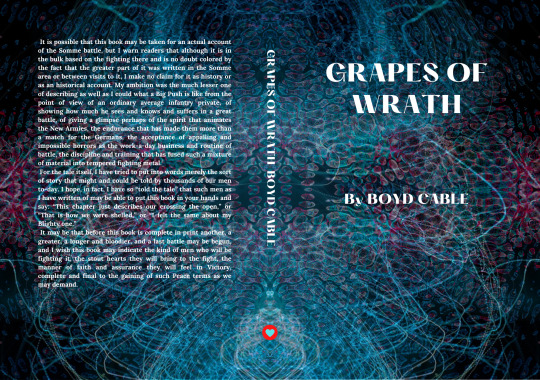
Boyd Cable's "Grapes of Wrath" is a poignant exploration of the human spirit amidst the turmoil of war. Set against the backdrop of World War I, Cable's novel follows the journey of a group of soldiers as they navigate the harrowing realities of combat and confront the profound moral dilemmas it presents. Through vivid prose and compelling storytelling, Cable captures the essence of the soldier's experience, from the camaraderie of the trenches to the devastation of battle.
At the heart of "Grapes of Wrath" is Cable's exploration of the psychological and emotional toll of war on the individual. Through the eyes of his protagonist, Cable delves into the complexities of fear, courage, and resilience in the face of unimaginable adversity. The novel offers a raw and unflinching portrayal of the physical and mental challenges that soldiers endure, shedding light on the often overlooked human cost of conflict.
One of the most striking aspects of Cable's work is its focus on the humanity that persists even in the darkest of times. Despite the horrors of war, Cable's characters retain their capacity for compassion, empathy, and love, serving as a powerful reminder of the resilience of the human spirit. Through moments of kindness and camaraderie amidst the chaos of battle, Cable highlights the enduring bonds of friendship and solidarity that sustain soldiers in their darkest hours.
In addition to its exploration of the individual experience of war, "Grapes of Wrath" also offers a broader commentary on the nature of conflict and its impact on society as a whole. Cable's vivid descriptions of the landscape of war and its aftermath paint a vivid picture of the devastation wrought by violence, while his portrayal of the social and political forces at play provides insight into the broader context in which war unfolds.
Overall, "Grapes of Wrath" is a powerful and thought-provoking novel that offers a nuanced portrayal of the human experience in times of war. Through its compelling characters, vivid imagery, and profound insights, Cable's work resonates with readers long after the final page is turned, serving as a testament to the enduring power of literature to illuminate the complexities of the human condition.
Boyd Cable's "Grapes of Wrath" is available in Amazon in paperback 15.99$ and hardcover 21.99$ editions.
Number of pages: 182
Language: English
Rating: 8/10
Link of the book!
Review By: King's Cat
#Grapes of Wrath#Boyd Cable#World War I novel#Trench warfare#Soldier's journey#Battlefront camaraderie#Psychological impact#Emotional resilience#Human spirit#Courage under fire#Moral dilemmas#War's toll#Devastation of conflict#Sacrifice and bravery#Individual experiences#Comradeship#Surviving the trenches#Psychological trauma#Humanity in war#Realities of combat#Heroism and sacrifice#Brotherhood in arms#Frontline camaraderie#Shell shock#Post-war trauma#Battlefront friendships#Emotional struggles#Psychological resilience#War's aftermath#Impact on soldiers
1 note
·
View note
Text

Courage under fire (1996)
0 notes
Text



LIONHEART / robb stark by @heartofmortis
TARYN BARATHEON AND ROBB STARK the queen and the king in the north
#game of thrones#a song of ice and fire#got#asoiaf#robb stark#robb stark x oc#robb stark x original character#taryn baratheon#oc#richard madden#lily james#cinderella 2015#cinderella#lionheart#lionheart is literally the best got fic ever created#hope is the best writer of the future generation and i am so glad to be her fan#tarynrobb#wolfstag#tarynrobb changed the trajectory of my life you guys like it's literally perfection#if you haven't read it you should it's so worth it#and if you don't read it appreciate it and love it i am going to appear under your bed tonight to haunt you#i am so serious the whole the great war series are masterpieces just like the courage of stars series for star wars#check them out as well or i am coming in your house truly#richard madden gif#robb stark gif#lily james gif#idk how to tag still
16 notes
·
View notes
Text
I really want to include the whole “She was coming, the train was coming, so was I.” in Courage Under Fire
8 notes
·
View notes